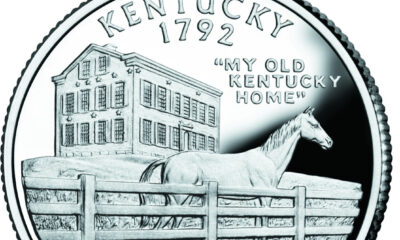Executive
Vaccine science – time to reexamine
Vaccine science has dominated public discourse about communicable disease – and turns out to have questionable foundations.
Another stay-indoors, button-up-your-overcoat, not-enough-sun cold-weather season is upon us. With such seasons – without fail – rises the incidence of seasonal respiratory viral illnesses. Everyone knows their names: the common cold (choryza), the flu (influenza), and now, coronavirus. The only reason the common cold doesn’t have a vaccine is that too many people know that the common cold isn’t one virus, but many. The other two have vaccines. Now we’re hearing about how many people have died, not from coronavirus, but from its vaccine. But this isn’t the first time someone has charged that the treatment was worse than a disease. That happened more than a century ago with the disease that gave “vaccination” its name: smallpox. This, plus today’s findings, suggest that the entire concept vaccine requires reexamination.
Where did the word vaccine come from?
Edward Jenner gets the credit – which no one disputes – for suggesting the idea of inoculating people, not with the agent of human smallpox, but with the agent of cowpox (Variolae vacciniae). But few people know that he accepted an earlier inoculation with the human agent, and this affected him badly. They might not know another thing: his idea of inoculation against cowpox nearly died. Apparently those wanting to test his theory had to obtain cowpox samples from him. The online biography of Jenner suggests the samples were subject to contamination – with the human agent.
In 1840 – forty-two years after Jenner published his work on smallpox – Parliament forbade treatment with the agent for human smallpox. But in 1853 Parliament made treatment with the cowpox agent – the first vaccine – compulsory. Thus compulsory medicine began with him.
And so did the protests against compulsory medicine. Thirty-six years after the passage of that law, came the first comprehensive scientific protest of the idea. That protest came from a most unlikely source: Alfred Russel Wallace.
Who was Alfred Russel Wallace?
Alfred Russel Wallace was “The Other Guy” in the by-line of the first seminal work on evolution, Origin of Species. But few people know that he was the Joseph R. Mercola of his day. Like Mercola, he advocated for a holistic approach to human disease. According to holism (the Greek word holes is the direct source of the English word whole), one must consider the whole body of influences upon a person to understand why a person gets sick. Rarely does one thing make a person sick. Rarer still is the super-bug or super-poison that would make anybody, however hardy, sick – in any dose.
The journal Emerging Infectious Disease carried this retrospective on Wallace in April of 2010 – shortly after Darwin’s bicentennial. Weber, T. P. (2010). Alfred Russel Wallace and the Antivaccination Movement in Victorian England. Emerging Infectious Diseases, 16(4), 664-668. https://doi.org/10.3201/eid1604.090434. More to the point, Wallace, in 1889, published a monograph asserting that vaccination was useless and dangerous. After examining the records of forty-five years, he held that Jenner’s vaccine hadn’t saved anyone. The Wayback Machine has the monograph today.
What did Wallace find?
Wallace made four statements in his monograph that might sound familiar:
1. That during the forty-five years of the Registration of deaths and their causes, Small-pox mortality has very slightly diminished, while an exceedingly severe Small-pox epidemic occurred within the last twelve years of the period.
2. That there is no evidence to show that the slight decrease of Small-pox mortality is due to vaccination.
3. That the severity of Small-pox as a disease has not been mitigated by vaccination.
4. That several inoculable diseases have increased to an alarming extent coincidently with enforced vaccination.
His monograph showcases the statistical measures he used – a method Weber called “actuarial” in his retrospective. Particularly instructive are two mortality graphs comparing smallpox, typhoid, and a small class of acute infections from 1838 to 1882. Wallace astutely used per capita mortality (as deaths per million person-years), not absolute mortality.
Except for the epidemic of 1871, smallpox showed a slightly downward trend in mortality. Typhoid fevers declined much more sharply, as did the other acute infections. (The graph calls them “zymotic diseases,” in the mistaken belief, prevalent then, that yeasts were the causative agents. That belief is actually not so far wrong; consider Candida albicans, a most annoying yeast known to any modern woman!)
What sort of influences acted on those other diseases? Not any vaccine – that didn’t exist then, except for smallpox. Rather, it was improvements in sanitation.
The first mortality graph compares typhoid diseases to the other two categories – while the second, examining mortality in all of England and Wales, compares official vaccination to smallpox on one hand, and other acute infections on the other. Official vaccine rates actually declined, in lock-step with smallpox mortality itself. Vaccination increased with the epidemic – but in lock-step with smallpox mortality itself. No vaccine proponent (including Weber) has ever explained this totally counter-intuitive result. Nor the next result Wallace showed: the case-fatality rate of smallpox remained the same, even with the vaccine.
Smallpox and vaccine mortality in the British Army and Royal Navy
Wallace’s most interesting finding concerns smallpox and vaccine mortality in Her Majesty’s Armed Services. (Wallace studied a period during the reign of Queen Victoria, second of the Three Long-Reigning Queens.) He found total mortality, over the 23 years he examined, to be 83 deaths per million in the Army and 157 per million in the Navy. Why the discrepancy? Because “sick bay” aboard any Naval vessel less well-ventilated and less capable of isolation than any Army hospital. Yet general all-disease mortality was less in the Navy than in the Army. What was so special about smallpox in the Navy? Wallace never figured that out. But he also maintained that the civilian population, especially in cities, lived with overcrowding.
He noticed something else about smallpox in the services. Each successive dose of the vaccine made the disease itself more likely to kill. (And so much for the vaccine being one hundred percent protective against infection!)
Even so, soldiers and sailors tended to have lower all-cause and infectious-disease mortality than civilians. In that day, soldiers and sailors were the fittest physical specimens of humanity.
In the second part of his monograph, Wallace tore apart the statistics used to claim lower mortality among the vaccinated. Simply put, proportions of the vaccinated were unreliable in those days. Furthermore, some died unvaccinated because they were too young or too sick to take the vaccine. (To say nothing of criminals and nomads who avoided the “vaccine officers.”)
And what do we observe with the coronavirus vaccine?
Followers of alternative media have known that the coronavirus vaccine has its own mortality. A few celebrities have in fact taken it, to signal their virtue and somehow prove safety. Those celebrities have died. BBC Presenter Lisa Shaw was only the first to die. Worse for the vaccine proponents, she came to autopsy. Final Anatomical Diagnosis: multiple micro-strokes.
More recently, consider the case of Barry Young, a worker with the New Zealand Ministry of Health. Over last weekend, he broke the story that coronavirus vaccine mortality was not only excessive, but was batch-specific. Rumors have long held that Pfizer Pharmaceuticals prepared separate “kill shots,” “weak shots” and placebos for distribution to red, purple, and blue States of the United States. Then someone mixed up the batches, so that the intended effect – lowering the voting population of conservatives more than liberals – did not occur. Barry Young apparently found the “kill shot” batches and blew the whistle. For that the authorities arrested him.
And what shall we make of the Army less-than-honorably discharging soldiers who refused the coronavirus vaccine? And now begging those soldiers to come back and re-up?
We also have studies showing that those who complied with COVID restrictions are more likely to have mental-health issues. Whether the restrictions caused the issues, or whether compliance reflects the issues, is less clear. The spectacle of drivers wearing masks while driving – without passengers – suggests the second possibility.
The seasonality of respiratory diseases
Actress Ruth Etting made the saying famous:
Button up your overcoat, / When the wind blows free; / Take good care of yourself! / You belong to me!
The coronavirus experience lasted for two full years after 2020. Each time, incidence and prevalence declined over the summer and increased in the winter. Ultraviolet light – part of the solar spectrum – kills viruses on contact. It also causes formation of Vitamin D, which enhances immunity. But not one person in authority adjusted health policy to recognize these facts.
Worse yet, the Centers for Disease Control and Prevention reported zero incidence and prevalence of the ‘flu in 2020! Instead, patients with mild febrile illness carried a diagnosis of COVID! Worth mentioning in this regard is that Wallace charged the hospitals of his day with deliberate misreporting of incidence, prevalence, and mortality for smallpox. We now know that modern hospitals had an incentive to misreport in two ways. They reported deaths with coronavirus as deaths from it. (This extended even to deaths from motor-vehicle trauma!) And they reported patients as having coronavirus who didn’t have it.
But what about polio?
What about it? In fact, to his credit, Jonas Salk, who propounded the polio vaccine, felt the announcement of his invention was premature. He wanted trials – and apparently he got them. According to The Smithsonian, 1.8 million children took part in clinical trials of the Salk preparation.
Today, independent statistics on polio vaccine morbidity and mortality seem impossible to come by. The establishment set up its Vaccine Adverse Event Reporting System (VAERS) only grudgingly, and seem to disfavor any analysis of the reports. But at least one study does show that infants are more likely to die with every “shot” they get.
The best source of information on any vaccine, and the disease against which it is supposed to protect, is Barbara Loe Fisher’s National Vaccine Information Center. They tell a story about polio only those who visit them will ever know. 95 percent of all infections with polio virus present no symptoms. But in less than one percent of patients, polio can paralyze. Even then, most people recover from it – but not all. Three paralytic “wild types” once existed; now only one remains.
And now the kicker: Albert Sabin’s oral polio vaccine now gets much of the blame for paralytic polio. Worse, a Vaccine Derived Polio Virus is now known to circulate.
What about the vaccine theory?
To this day, children everywhere learn about Saints Edward (Jenner), Jonas (Salk), and Albert (Sabin.) (And Sir Gunnar Kasson, Knight of the Most Excellent Order of the Iditarod, credited with delivering diphtheria antitoxin to Nome, Alaska, by driving his dog sled along most of the Iditarod Trail.) New or once-buried evidence suggests that Saints Edward and Albert might not have been so saintly.
The scientific community first lionized Alfred Russel Wallace for collaborating with Charles Darwin to discredit the Christian faith. But men turned to “spiritualism” when the atheistic utilitarianism of Darwin and Wallace proved unavailing. Wallace himself joined the spiritualist movement, and pioneered holistic medicine. That’s when the scientific establishment turned against him – even though he had the receipts. Those receipts showed that Edward Jenner’s vaccine was not the lifesaver the establishment marketed it to be.
Vaccination is a huge delusion: …it has never saved a single life; but that it has been the cause of so much disease, so many deaths, such a vast amount of utterly needless and altogether undeserved suffering, that it will be classed by the coming generation among the greatest errors of an ignorant and prejudiced age, and its penal enforcement the foulest blot on the generally beneficent course of legislation.
The coronavirus vaccine debacle has forced many to take a second look at the entire concept vaccine. And the establishment knows it, and it worries them. But so far they are offering only platitudes. A thorough reexamination of all vaccine introductions and practices is now warranted. Overloading children’s immune systems with several antigenic insults at once, is not making the human population any healthier. Maybe reexamining how people live, would.
Furthermore: Alfred Russel Wallace suffered “cancellation” as severe as has Mercola, or anyone else who questions COVID vaccines today. (Especially Robert F. Kennedy, Jr.) Imagine how different our history would be, had Wallace’ contemporaries listened to him instead.
Terry A. Hurlbut has been a student of politics, philosophy, and science for more than 35 years. He is a graduate of Yale College and has served as a physician-level laboratory administrator in a 250-bed community hospital. He also is a serious student of the Bible, is conversant in its two primary original languages, and has followed the creation-science movement closely since 1993.
-

 Executive4 days ago
Executive4 days agoSecret Service chief gets no solace
-

 Civilization5 days ago
Civilization5 days agoBiden drops out of race
-

 Executive2 days ago
Executive2 days agoWaste of the Day: Louisville Taxpayers Pay Nearly $600,000 For Empty Building’s Maintenance, Security
-

 Guest Columns4 days ago
Guest Columns4 days agoFear Itself: Democrats’ Favorite Strategy Caused Their Current Chaos
-

 Executive3 days ago
Executive3 days agoWhere is Joe Biden – or Jill?
-

 Executive1 day ago
Executive1 day agoWaste of the Day: Throwback Thursday: Cities Used Crime Prevention Funds on Soccer Games, Paper Shredding
-

 Civilization4 days ago
Civilization4 days agoBuild Iron Dome in the United States To Prepare for Israel’s Worst Day
-

 Executive2 days ago
Executive2 days agoFacile and politically motivated suggestions








